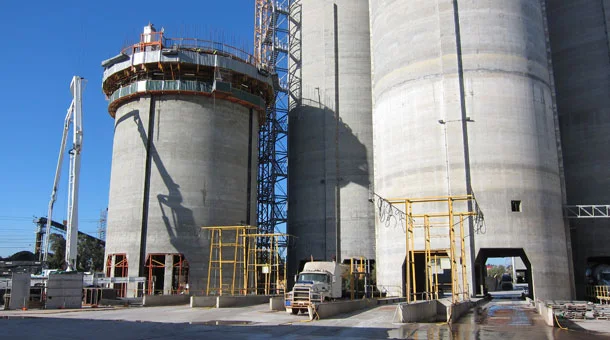Construction is the process of creating and building infrastructure. The two forms of construction often employed in tall buildings are:
- Slip-form Construction
- Jump-form Construction
Slip-form Construction:
 |
| Slip-form Construction |
ground and raised as the concrete is cast. It is used to create a continuous placing sequence resulting in a monolithically erected structure or wall with no visible joints.
Slip-form construction is used for various applications such as bridge piers, building cores, shear walls, chimneys, communication towers, cooling towers, and silos.
The procedure can be used to erect a structure in half the time required for conventional formwork. Also, the working platforms rise with the form and reduce the labor costs of dismantling and re-erecting scaffolds on each floor.
Jump-form Construction:
 |
| Jump-form Construction |
The system is supported by the lower lift of concrete. Forms are released and stripped after the concrete has adequately cured.
The Jump-form system may involve less crew than the conventional slip form operation, and the work is done only during the day shift. It is less expensive and in some cases faster.
The system comes with adjustable steel forms, work platforms, hoist, jib cranes, concrete bucket, and powered concrete distributor buggy.
